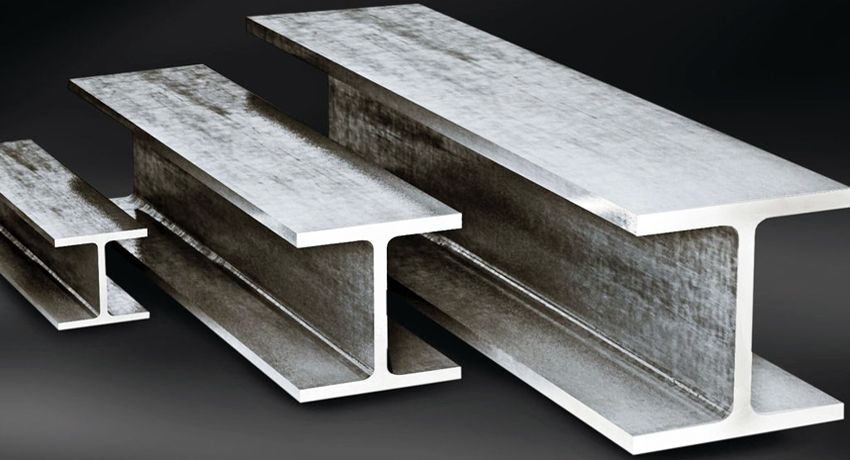Cottage today is no longer a summer building with facilities in the yard, but in fact a full-fledged suburban housing. Moreover, it is equipped with powerful modern appliances – a refrigerator, a washing machine, a microwave. All these mechanisms facilitate homework, but they are also objects of increased danger. In order to avoid fires and tragic cases it is recommended to equip the ground at the cottage with your own hands. The outline of the circuit is not so complicated, and for installation it is not necessary to invite experts.
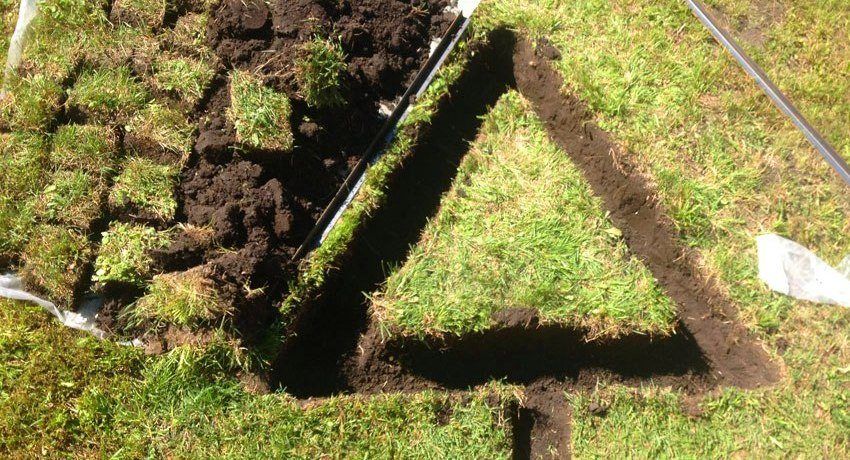
The most common grounding system is a construction of three metal pins (electrodes). The rods are buried in the ground and welded together with a horizontal steel strip. The finished ground loop is connected to the power shield using a steel bar, conducted underground.
Helpful advice! The ground contour is not recommended to be mounted in rocky and stone soils – the specific resistance of the rock is too high.
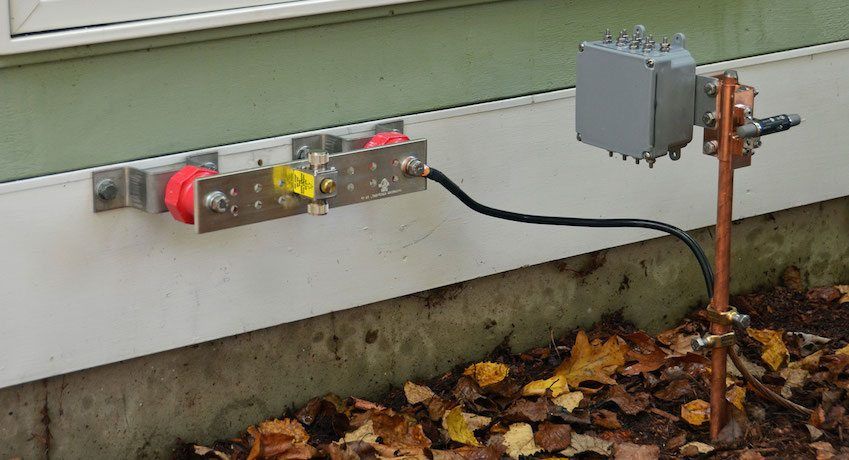
The principle of the grounding system
Residential homes are usually powered from a single-phase mains with an alternating current of 220 volts. The work of domestic mechanisms and installations provides an electrical circuit in which there are two conductors – the phase and the neutral wire.
The design of each appliance provides for the presence of insulation and fuses that protect people from electric shock. Imagine a situation where unreliable contacts sparkled. The voltage in this case falls on the body, for example, a washing machine. The hostess, touching the wet hand of his faithful assistant, will receive a strong electric shock.
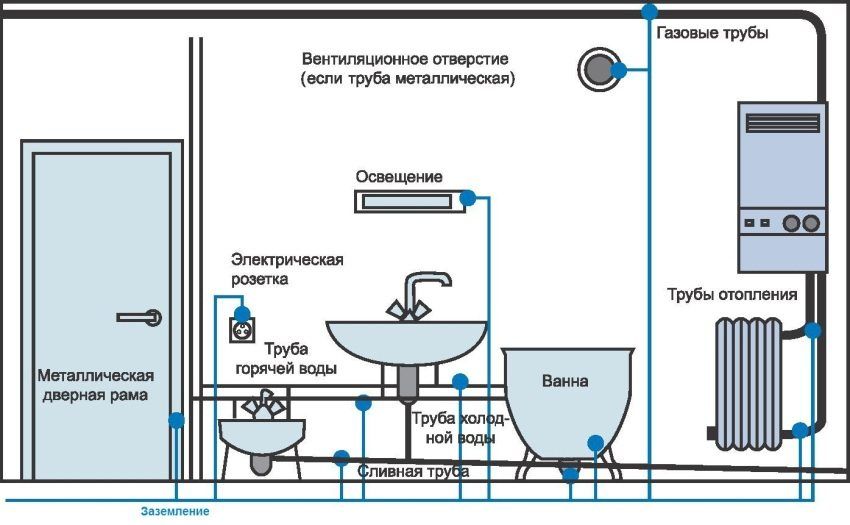
It is especially dangerous when there are metal structures near the defective unit having so-called natural grounding. These include:
- pipes and radiators,
- water pipes,
- gas pipes
- open reinforcement of reinforced concrete slabs.
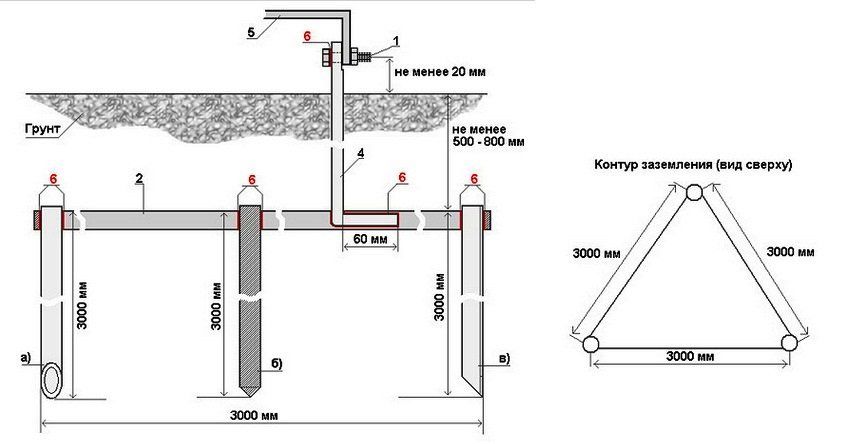
By holding the battery and the body of the machine at the same time, the person closes the electrical circuit towards himself. The current goes in the direction of zero potential (to the ground), passing through the body as well. The nature of electricity is such that the flow of electrons, like a stream of water, moves through the channels with the smallest resistance.
To protect the household from such accidents, mount the ground loop in the country with their own hands. Whether the circuit of the device fails, or the insulation penetrates the discharge, the trouble will not happen. A pre-established grounding line will lead a dangerous voltage to a point with minimal resistance, namely to the ground.
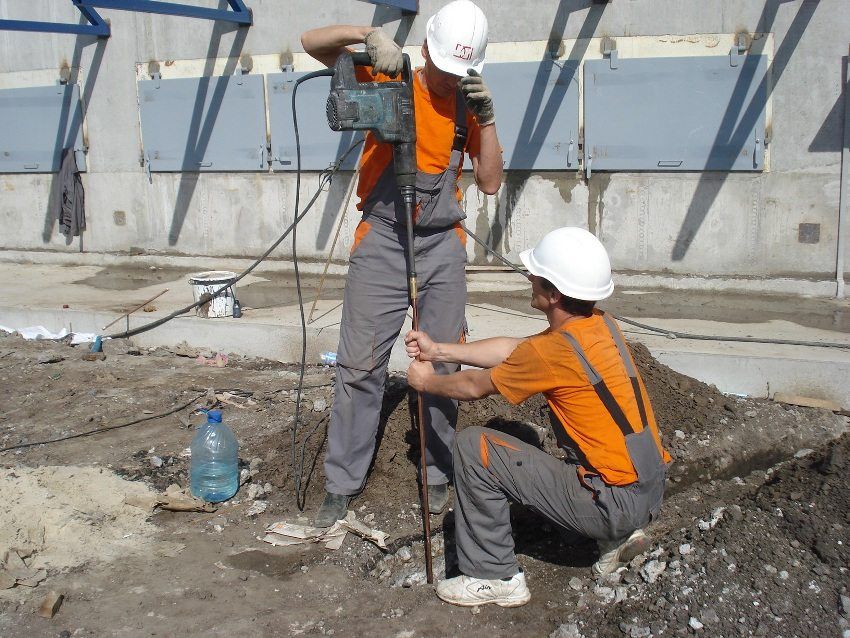
Some household craftsmen are convinced that water pipes and heating pipes can be used to divert the current. Such grounding in the country with their own hands can not name the safety scheme. Pipes are highly oxidized, or have poor contact with the ground. In addition, plastic connections are often included in the piping system, which open the electrical circuit.
Many modern electrical appliances are equipped with a cable with a three-core plug. They are installed the same outlet. The zero wire in the cable is indicated in blue, the ground wire is yellow-green, the phase is anything other than those named.
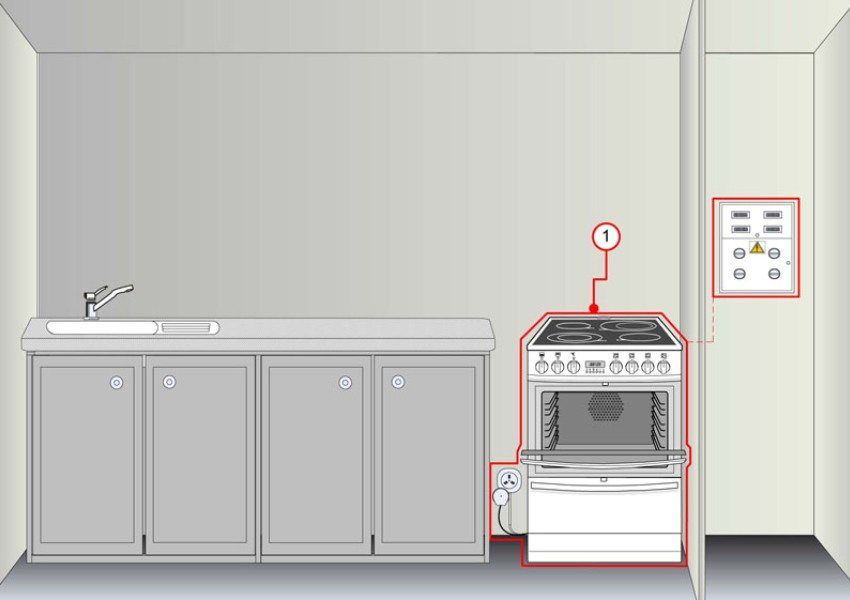
Wanting to save on the grounding device in the country with their own hands, they use this scheme: they make a jumper between the grounding and zero contact in the socket. However, such a project is extremely unpredictable. If in any part of the circuit there is a re-phasing or poor contact of the working zero, dangerous voltage will appear on the instrument case.
Some homeowners, installing a special protective device (UZO) in the network, consider the problem solved. But the operation of the RCD will be correct only if there is grounding. Then, in the event of a leakage of current, the electrical circuit will immediately close, and the mechanism will work, turning off the power of the dangerous section.

The resistance of the current diversion system should be less than the resistance of the human body. For calculations, an average value of less than 4 ohms is assumed. The standards meet the values of permissible resistance in 0.5 Ohm, 30 Ohm, 60 Ohm. But here, where it is actually about life and death, less is better than more.
220V voltage stabilizer to give: how to choose a device to protect equipment. Parameters of single-phase devices. Features of the installation of the stabilizer. Selection of the optimal model.
The ground loop should provide the lowest possible resistance and reliable contact with the ground. However, the soil has a different resistivity. It depends on its composition:
- sand – 1000 Ohm * m;
- black soil – 200 ohm * m;
- sandy loam – 150 ohm * m;
- loess loam – 100 ohm * m;
- semi-solid clay – 50 ohm * m;
- plastic loam – 30 ohm * m;
- peat or plastic clay – 20 ohm * m.
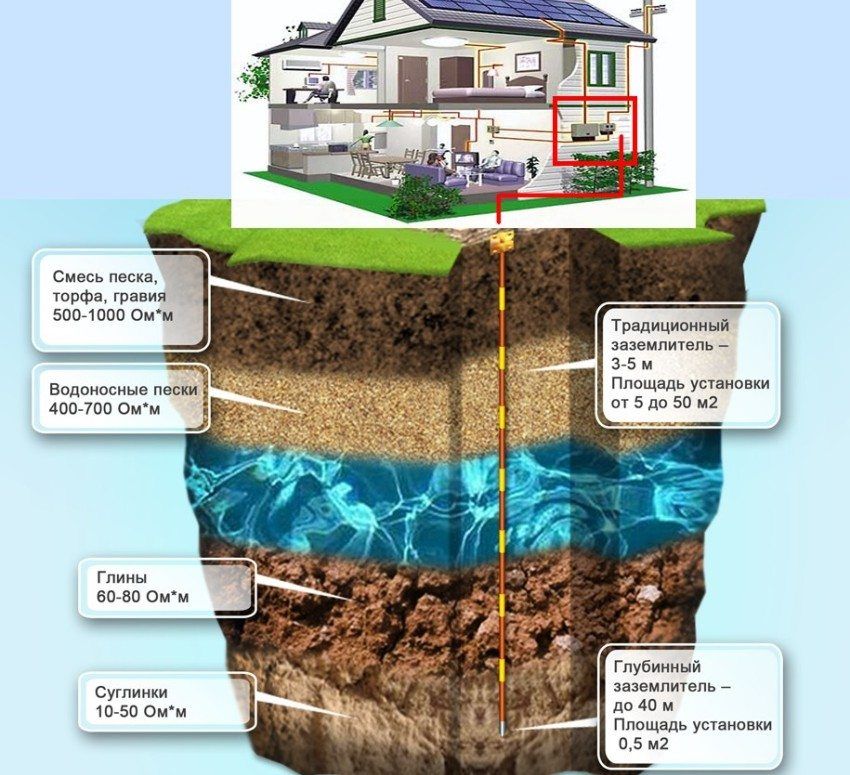
We see that the layers with the lowest resistance values are at a considerable depth. The problem of successful grounding is solved in several ways:
- deeper immersion of the electrodes in the soil;
- adding additional vertical elements;
- increasing the area of contact of the rods with the ground (the use of wider pins with a larger cross-section);
- increase the distance between the electrodes.
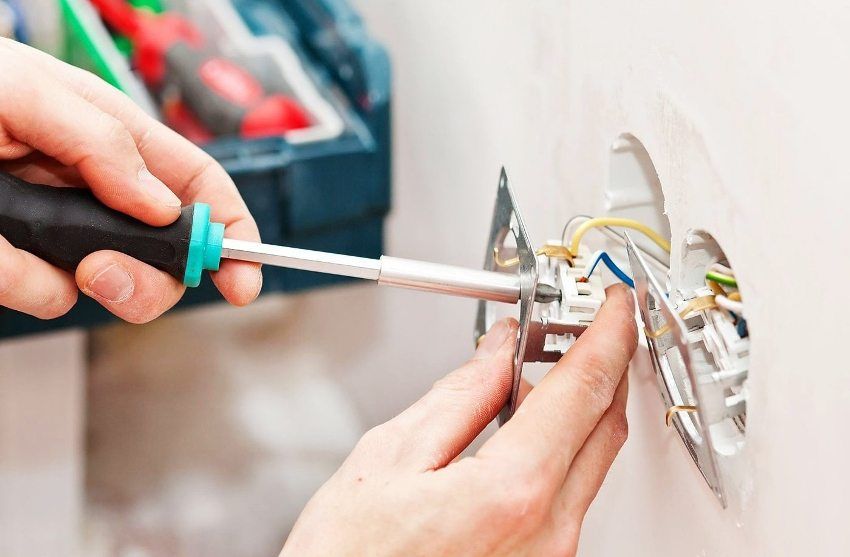
- Recessed metal contour around the building. Basically it is a reinforcement hammered into the ground. The rods are interconnected by a welded metal tire.
- The most popular grounding system in the country with their own hands is a diagram of three or more long electrodes immersed in the ground, connected by a steel strip.
- Grounding with one rod recessed to a considerable depth (from 6 meters).
- Foundation Earthing. This is a closed loop made of welded metal mesh. It is laid under the lower waterproofing layer of the foundation, or on the bottom row of reinforcement. Such grounding can be installed only when filling the foundation.
Helpful advice! Metal elements acting as electrodes should not be painted. This impairs their conductivity.

For detailed consideration we take the grounding system in the country with their own hands, scheme number 2 – a triangle with pins at the vertices.
Material for electrodes:
- minimum 4×4 steel angle;
- reinforcing rod section of 10-12 mm;
- metal pipe with a wall section of 3.0-5.0 mm;
- steel strip 50 mm wide.
Helpful advice! Reinforcement should be smooth. The corrugated surface does not provide a strong contact of the electrode with the ground. When clogged, voids are created that reduce the quality of grounding.

The length of the pins should be about 3 m. As a strapping, you can use a metal strip with a section of 4X40 mm, or reinforcement with a diameter of 14 mm. When connecting the contour necessarily used welding.
First we select and clear the place on the site where the contour will be installed. It is optimal if the distance from the electrodes to the power cabinet is about 10 m. Further work is carried out in this way:
- we dig a pit as a strip foundation, only in the form of an isosceles triangle. The trench depth is 1 m, the width is half a meter. The distance from the rod to the rod should be approximately 1.2 m. From one corner of the triangle we dig a ditch to the power shield;

- in the tops of the triangle hammer electrodes. With a high density of soil it is necessary to drill holes;
Helpful advice! If the pin can not be immersed in the ground at full length, you can take shorter rods (2-2, 5 m). Then their number should be increased.

- hammered rods must be visible above the ground surface so that they can be connected by bus. Holes are recommended to fill with earth mixed with salt. This will greatly reduce the resistance of the electrodes. True, metal corrosion will go faster;
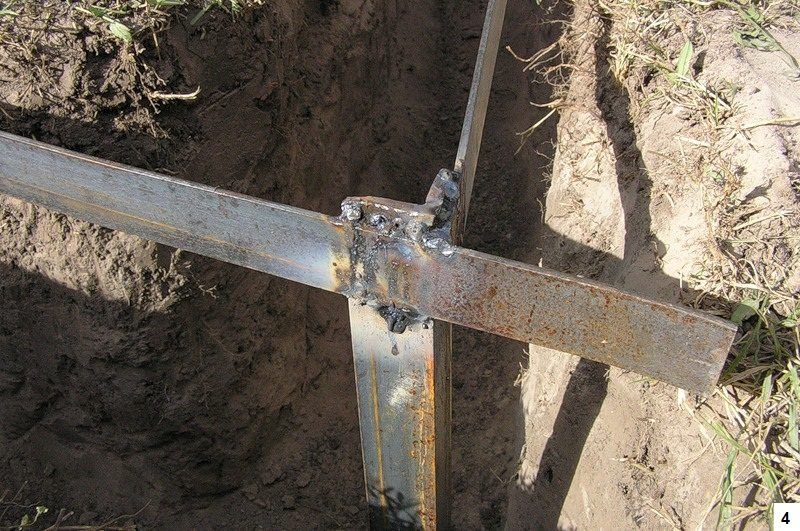
- weld the strapping to the rods, forming a triangle. From one electrode we conduct a strip along the trench to the distribution cabinet. The conductor is attached to the shield by means of a welded bolt;
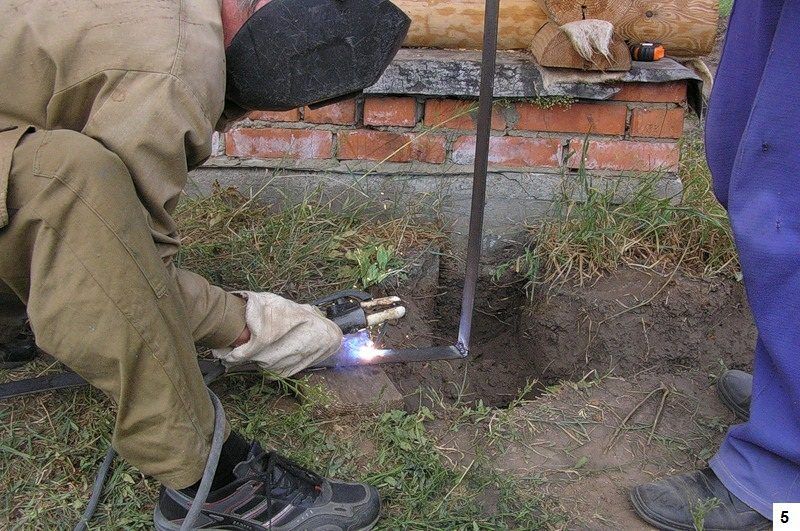
- check the resistance with an ohmmeter. If the figure is less than 4 ohms, you can fill the trench. If more, drive a few more electrodes and connect them with the previous ones. After that, the risk of electric shock from home appliances will be reduced to zero.

